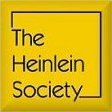|
|
|
- "Danny Deever"
- Poem, first published in The National Observer in 1890 and then collected in Barrack-Room Ballads, that describes the hanging of a British soldier for shooting a fellow soldier.
- "Gentlemen Rankers"
- Poem about British army life by Rudyard Kipling.
- Just So Stories
- Collection of children's stories published by Rudyard
Kipling in 1902 that gave whimsical explanations of the origins of
different animals. The collection comprises:
- How the Whale Got His Throat
- How the Camel Got His Hump
- How the Rhinoceros Got His Skin
- How the Leopard Got His Spots
- The Elephant’s Child
- The Sing-Song of Old Man Kangaroo
- The Beginning of the Armadillos
- How the First Letter Was Written
- How the Alphabet Was Made
- The Crab that Played with the Sea
- The Cat that Walked By Himself
- The Butterfly that Stamped


